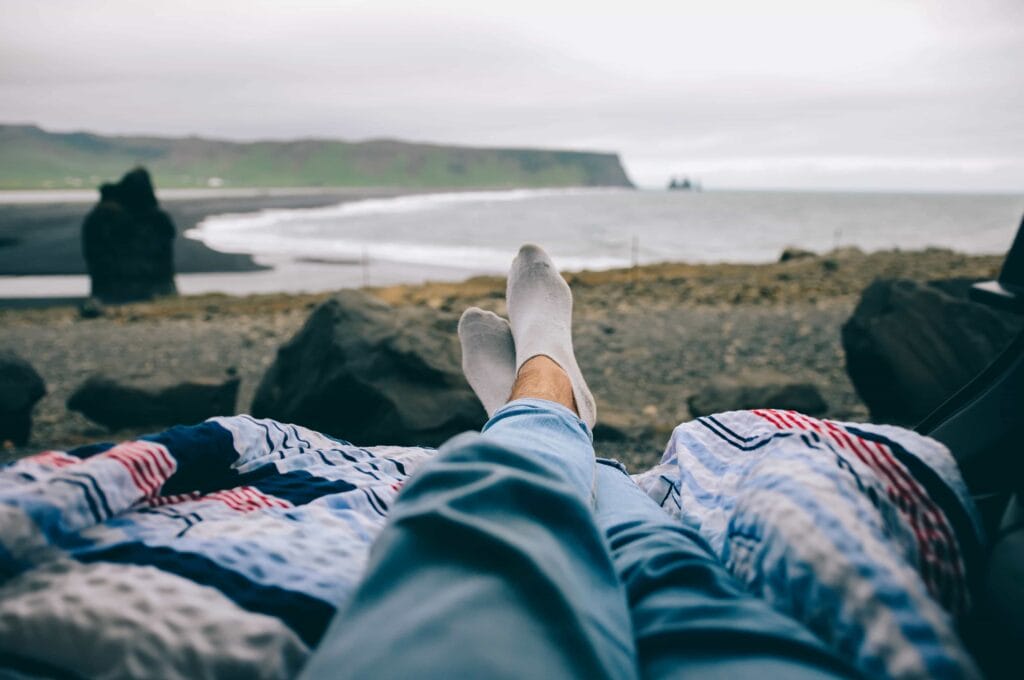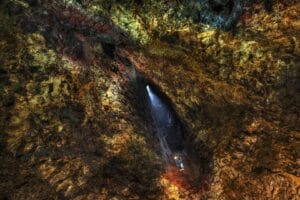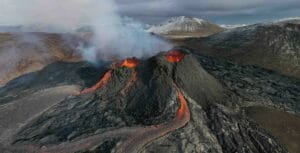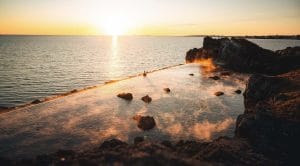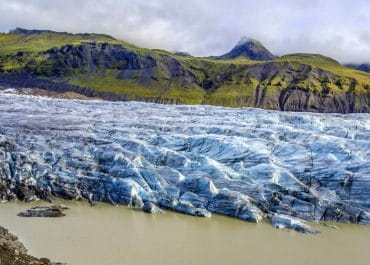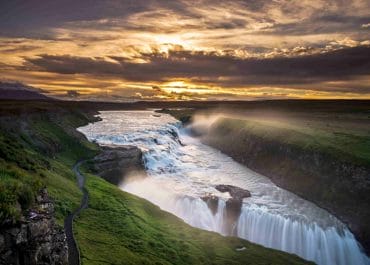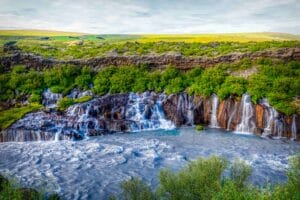A once in a lifetime experience, Iceland will have you see everything landscape-wise that you need in this one lifetime. From the glaring volcanoes to the frozen glacier, from cascading waterfalls to long-stretched highland, from the Icelandic horse-riding sessions to the calming waterfall-watching expeditions, from a lazy stroll in the streets of Reykjavik to the high energy concerts, Iceland has everything that you would ever need or want from a vacation. But as much fun as it is to get to a vacation spot and blow off some steam, it may all go the wrong way if you do not get the packing right.
Trips away from home even if it is just to grandma’s house require a thoughtful overnight packing session, so you need a huge check-list to make sure you have packed everything you need for a trip that will mostly include you tripping around the country in a campervan. You may think that you can buy anything which you forget to pack in the country but think again. Iceland is a bit pricy and it is best to get your vacation things after doing thorough research instead of doing some last-minute shopping at your destination. So here is a complete packing list for you to make sure you have packed everything.

Find the Perfect Camper Van
It is ideal to rent a camper van for your self driving trip in Iceland. Stay connected to the nature while driving around, exploring new locations and sleeping on campsites all over the country.
When it comes to finding the perfect camper van for your trip, there is a lot to choose from. In Iceland you can find variety of camper van rentals that offer different kind of campers for rent. When finding the best camper for your trip, make sure to check how many persons can sleep in the van. Many rentals offer camping equipment for rent as well. It is very handy to pick up the camper van with all the camping equipment at the same time and place.
We usually go with the campers from Happy Campers. They come at all sizes, are comfortable, easy to drive and you can rent everything you need at one place.
With the code HAPPYWII10 you can receive a 10% discount on all camper vans on their website.
Road Trips – Know the Temperature
Iceland is enough dicey when it comes to weather. Some people even claim to have seen all four seasons in a single day of summer. As amazing as it sounds, it can be a little overwhelming as when you are on a road trip around the country. The climate, daylight hours, winds, precipitation, and many other factors come across a huge range of variations as the country sees the transition of the seasons so you need to be prepared according to the season your road trip is planned for. Let’s have a detailed look:
Daylight hours
Summer and winters are poles apart (literally) when it comes to daylight. The summer season sees almost 21 hours of daylight in an average and winter season gets about 4 to 6 hours of sun. The sun sets somewhere around 10 pm in summers and stays up even till after midnight around the summer solstice. Winter solstice sees only 4 hours of sunlight and the rest of the day is spent in the dark. December is the month with the lowest average of daylight hours and June sees the highest average of daylight hours in Iceland. Both these scenarios are magical to witness in person but can be challenging for you when you are on the road. It is safe to say that both spring and fall are a mixture of summer and winter seasons.
Temperature
The average high temperature for summers stays around 13°C (55°F) and the lower average stays near 8°C (46°F). The weather is mild and there are lesser chances for you to encounter snow on roads, however, southern parts still get a little bit of its precipitation in the form of snowfall so keep your eyes peeled for that. You will get to the experience midnight sun in June and July for sure while August and May will show the phenomenon partially.
Winters are extremely cold in Iceland; winds are unbelievably strong and tourism is quite slow in the country at this time. So, you will find the road free of people but laden with snow at the same time. The average high temperature in winters goes up to a maximum of 5°C (41°F) in November and can drop as low as -3°C (27°F) in January. January is the coldest month of the year and November can be considered the one with the mildest temperature of the season.

First Things First – The Bags
Backpack
Before you decide on what kind of clothes you want to wear in your amazing tour pictures, you need to settle on a good backpack to store all the things you will be needing on road. A lot of things should be considered and made sure of before you settle on a type and brand. Look for a bag with multiple zippers and pockets. You will be carrying a lot of different items and you do not want them to get all mixed up in one zipper. A wider compartment for clothes and such, a flat compartment for laptops and documents, some mid-size zippers to store additional items like charger, adapters and power banks, small pockets for smaller – easy to lose items, and side pocket to keep your water bottle handy.
A 45-50-liter backpack will be sufficient to store everything from clothes to gadgets that you will need on your road trip.
Straps of your backpack should be comfortable and well-divided between shoulders, chest, and hip region to distribute the weight of the backpack ideally. Look for padded shoulder and hip straps along with a chest strap with buckle.
Recommendations
Backpack Protection – Rain Cover
Most backpacks are made with water-resistant fabrics but you should still carry a rain cover along with you to make sure that your backpack does not get the worst of the rain.
Day Pack
You can use your day pack when you step away from your vehicle to visit a nearby spot such as a hot spring, a nearby waterfall, mountains, or a small bird-watching session. It will spare you the trouble of taking the whole backpack with you or not taking anything just to avoid the struggle of dragging the whole luggage. It can be a small carry bag or a smaller version of your backpack to store some essentials like a camera, phones, chargers, and other equipment along with some snacks.
Recommendations
Packing Cubes
Consider this as an optional thing if you are a pro when it comes to packing in a space-saving style. Packing cubes are small cubical or cuboidal bags than can store a larger number of items in a smaller space by compressing them. This way, you can afford to pack a bit more than you initially planned. Not only that packing cubes save space, but they also keep things hyper-organized so you do not have to juggle a lot on the road to find something in the bag.

Dressing up for A Road Trip – All Seasons
What are the usual things that you consider when buying your clothes in general? We are guessing that the decision consists of a fair selection of something which is weather compatible, is made with quality fabric, is comfortable to wear and, last but not the least, is stylish enough to flaunt. Your vacation clothes should offer comfort because you will be traveling for the most of the day, quality because its important, weather compatibility so that you are ideally protected and style because you will be taking a lot of pictures. Add another factor known as ‘packability’ to this list and you are all set to choose your outfits.
Understand the Layering Process
You must understand the layering process in order to completely block the cold and winds and also stay comfortable at all times. Here is the most common mistake people make while putting on winter clothes – Base Layer (cotton t-shirt) → Heavy Jacket. Your body heat will leak out this way and there will be no protection from rain and wind. The right way to layer up is – Base Layer (acrylic/silk) → Mid Layer (warm hoodies/sweater/jacket) → Shell Layer (water and windproof jackets). Let’s break down the list layer-wise:

The First Layer – The Protective Outer-most Clothing
The Shell Jacket
Shell jackets are also known as waterproof and windproof jackets. They are extremely important for tourists in Iceland who are planning for a camper van trip across the country no matter the season. Make sure that your jacket is light-weight, completely water-resistant, and windproof especially if you are traveling in the winter season. The winds are pretty harsh even in the summer season so you need to keep safe in all circumstances.
A lightweight shell jacket will help you move around easily without being a nuisance while keeping you safe from the winds, water, and snow at the same time. Consider Gore-Tex fabric jackets as they are extremely light, breathable, and have great water-resistant and wind-resistant qualities. Apart from fabric, make sure that your jacket has all that you need like the number of pockets, zippers, adjustable cuffs, and waistband, etc.
Recommendations
Shell Pants
The most important thing to look for in your shell pants apart from the fabric is the size and adjustability of the ankle cuff. Go for a full-length side zipper pair as they can be easily put on without having to remove your boots first. Gore-Tex, again, can be considered a good choice along with Nylon as they are breathable, stretchable, and exceptionally durable.
Recommendations
Boots
Insulated and water-resistant – the two most important things you need to take care of while buying your boots. You will be visiting numerous waterfalls, glaciers, and ice caves in Iceland hence water resistance should be checked properly. Durability is an unsaid factor for the shoes as you will be walking a lot of difficult to conquer terrains. Take note that boots are going to be heavy and bulky no matter what variant you choose. So, focus on the warmth, style, durability, and water-resistance of the boots instead and choose the pair which is the most comfortable.
Be sure to home-test your boots before you set out to board the flight. Move around in the wet bathroom or fill the tub with some water and splash a bit here and there and look for any kind of leakage that you feel. Do not let any water enter through the ankle hole as that wouldn’t be a genuine test for the boots.
Gloves
When we say gloves, we do not mean the cute woolen gloves you wear around Christmas. We mean the heavy ones which are triple-layered for extra protection. A good pair of gloves will be lined with a warm layer of fabric like fur, a thin lining for absorbing moisture, and a protective outer layer which will be water-resistant and wind-blocker. Also, make sure that there is an appropriate wrist band to prevent the water from entering through your wrists.
Headgear
A warm woolen or fur-lined cap/beanie will do the trick. You can also pack a stylish hat for the sake of pictures but that is optional.
Recommendations
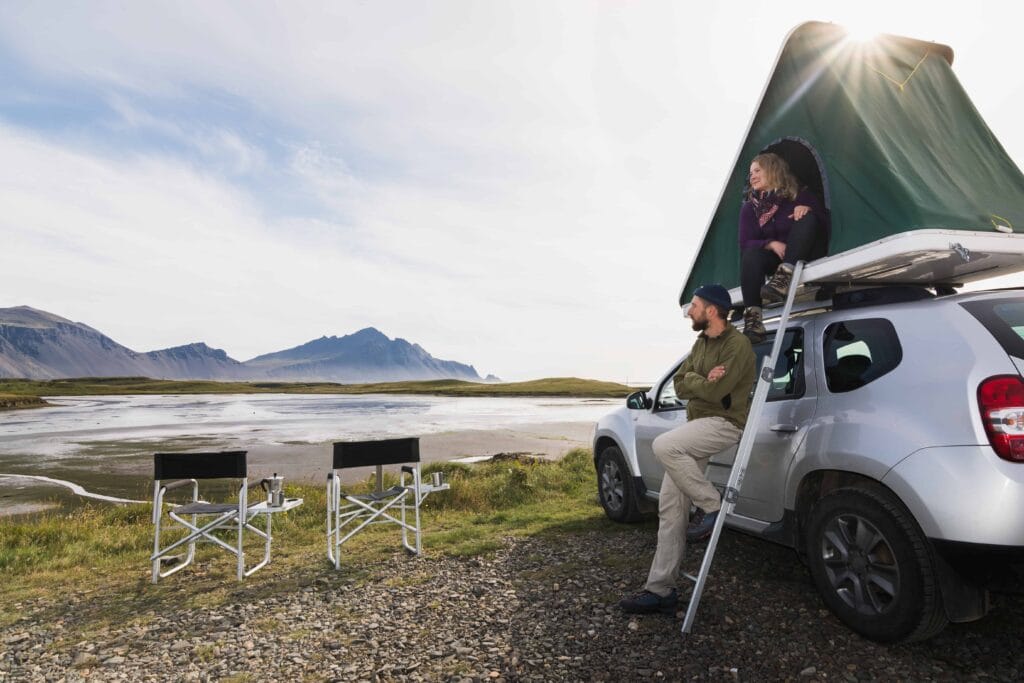
Second Layer – Warm Insulated Clothing
Jackets
Get a well-insulated jacket to wear as your primary defense form the cold under your shell jacket. Insulated jackets can be chosen while keeping style and warmth your priorities. Some top fabrics to consider for this piece of clothing is Polyester Fleece, Down Fill, Synthetic Fill, or a Hybrid variation. Polyester Fleece fabric will be the best option here since it is best suited for athletic purposes like hiking, and backpacking – similar to the things you will be doing on your road trip.
Recommendations
Sweaters
Choose polyester jackets/hoodies instead of woolen variants as they offer excellent breathability, quality insulation, and style too. You can also consider the trendy puffer jacket in place of polyester hoodies. They are light, stylish, insulated, and look amazing in photos.
Pants
Choose comfortable stretchy pants as the middle layer. Yoga leggings or gym tights will be the best alternative for this layer. They can be worm over warmers, they are extremely comfortable, offer great flexibility of movement, and most of them are made with lycra, spandex, and polyester hence they dry up very fast. Joggers, Fleece pants, and hiking pants will also work ideally.
Recommendations
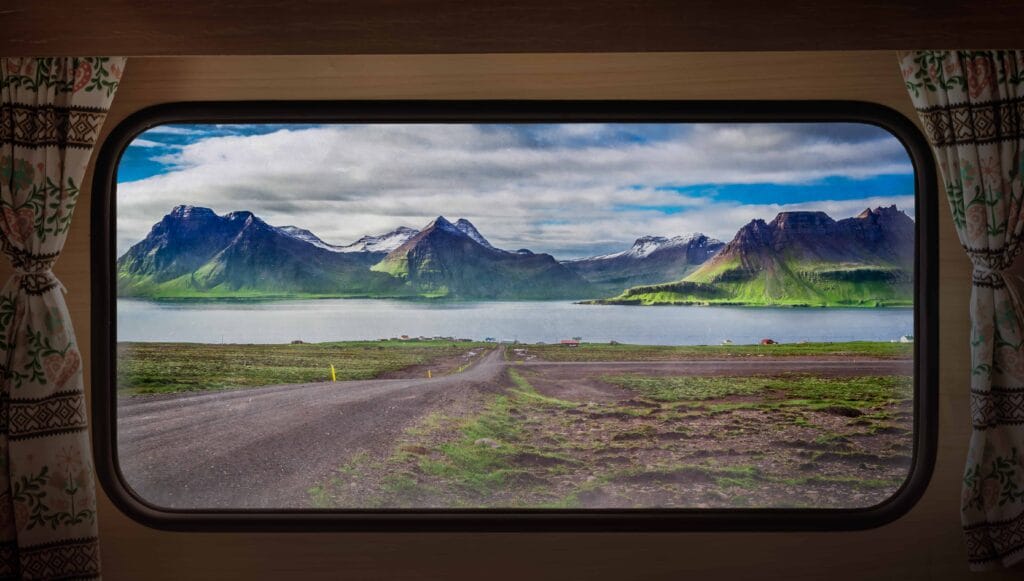
Fabrics to Consider
Polyester and Polyester-Fleece hybrid can be seen as the crownless winners for the second layer of clothes. They have all the qualities you require from your clothes and are quite affordable as well.
Third Layer: The Base Layer - T-shirts, Shirts, and Pajamas
It is mainly the clothes that you will be wearing on the very bottom and they are not supposed to be chosen based on the fact if they will keep you warm or not. The base layer should be bought based on two main factors – how it feels against your skin and breathability of the fabric as its main function is to absorb the moisture from your skin and transfer it out.
Fabrics
Avoid cotton and nylon at all costs. Cotton does not stay warm when wet, has poor absorption quality, takes a lot of time to dry, and does not prevent odor. Nylon has poor breathability and wicking and does not stay warm when wet.
Merino Wool, Silk, and Acrylic (and blends) are the top choice of fabric for your base layer clothes. All of them feel exceptionally soft against your skin, have good breathability, stays warm even when wet, dry off easily, and prevents odor. Silk and Merino wool should be your top choices. Silk will pack easier than any other fabric and is softer than any other material. Merino wool is heavier but stays incredibly warm. So, if you want to pick something lightweight and soft – go with silk options, and if you are looking for a warmer layer than Merino wool be your ideal fabric. Note that Merino Wool will get heavier when wet so make a well-thought choice.
Other Important Clothing Items
- Warm Socks
- Undergarments
- Swimsuit/Bathing Suit
- Quick-Dry Towel
- Scarves/Mufflers
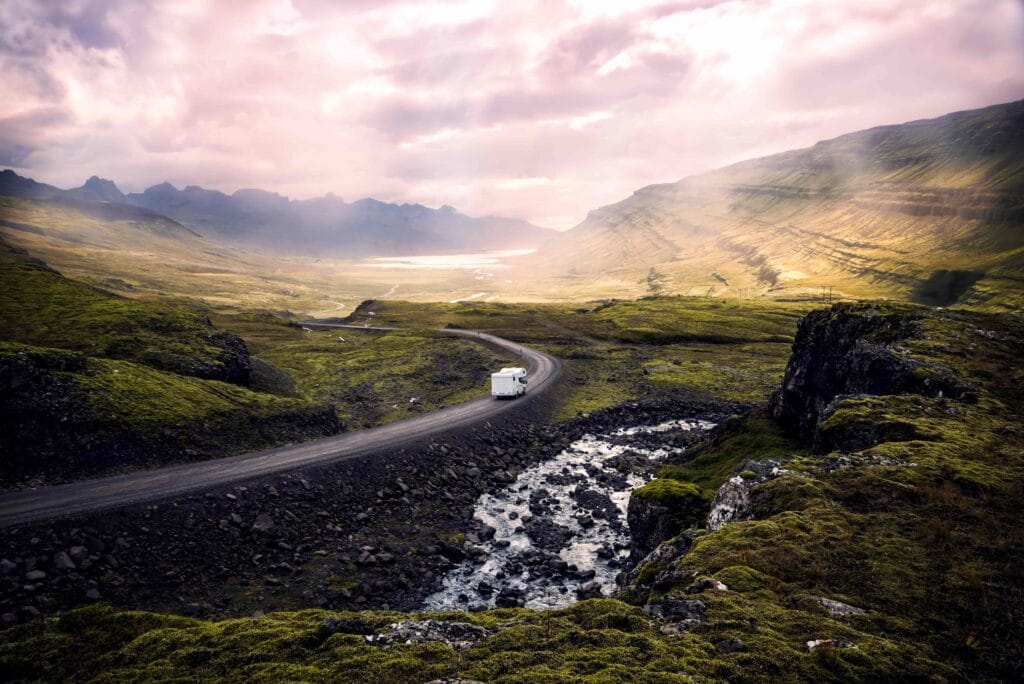
Packing the Additional Essentials
When you are all set with the clothing list, there comes the turn of some very important but smaller items which are easier to be overlooked and even missed out on when packing. Keep a check-list for these items ready as you will need them a lot when you are on road.
Gadgets
- Mobile Phone
- Laptop
- Camera – consider packing a DSLR even though most phones have great cameras nowadays. A professional with do justice to the scenery better.
- External Hard drive – for storing your videos and pictures. Running out of memory will be a serious problem in a place like Iceland.
- Pocket Router – for WIFI access anytime, anywhere
- Power Bank and Charger
- Headphones and Bluetooth Speakers
Toiletries
Soaps, shampoo, face wash, hand wash, moisturizer, sunscreen, etc.
Sleeping Mattress for the Camper Van and Campgrounds
Consider lining the back of your campervan with sleeping and mattress and carry a sleeping bag to use at the campgrounds. This way the drivers can take turns sleeping if they feel like it and resume driving with a fresh and active mind. It also proves useful for accompanying passengers as the journey becomes all the more comfortable.
Note that you can often rent mattresses and sleeping bags with your camper van.
Reusable Water Bottle
Always keep a reusable water bottle with you instead of buying a plastic bottle every time you feel thirsty. Plastic use and throw bottles encourage littering which is neither good sense nor a responsible action. Moreover, reusable bottles will have you keep water handy at all times so that you do not feel the scarcity on paths where there are no food stalls for long distances.
Also, the Icelandic tab water is the best water in the world!
Documents
The most important documents for a camper van tour is your driving license if you choose to go on a self-driving tour. It is wise to keep all other documents like passport, visa, etc. with you at all times along with scuba diving certificates, snorkeling certificate, hiking documented proof, and any other document required for these and similar activities that you have planned to experience along the way.
Download the FREE packing list here!
